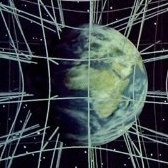Leaderboard
Popular Content
Showing content with the highest reputation on 09/21/20 in all areas
-
The EU is big enough to tell the US to stick their chlorinated chicken where the Sun doesn't shine. Post Brexit, the UK will be over a barrel and will have to accept pretty much any offer that the US makes. Anyway; Biden wants the Irish American vote (or, at least, doesn't want to upset them) so it's perfectly sensible US politics for presidential candidates to have a clear view on ensuring the future of the GFA. Since Borris' plan to break international law puts that agreement at risk, it's sensible for any other country to have a view on it. Most countries would prefer to maintain the GFA. If you are Mr Putin- or one of his supporters- you might want to sow discord at the boundary of Europe in order to make Russia look good by comparison. In that case you would want Boris' plan to go ahead. The same would be true for other rogue states with an interest in undermining international law and cooperation.2 points
-
I have to advise caution in the interpretation of food-borne disease illnesses. Countries have different ways to identify and quantify outbreaks and one cannot easily just look at the raw data. There is also a difference between severity which makes it even trickier. One way to normalize the data is to calculate disability adjusted life years (DALY), which basically is an estimate of years lost to ill-health or death. From there and using WHO data there is not a vast difference between the North American region (USA, Canada, Cuba, 35 DALY per 100,000 ) vs Western Europe (40-50 DALY per 100,000; I do not have finer grained data on hand). While there are significant differences in the type of diseases. there is not a huge difference when it comes to Salmonella infections. In fact, it is slightly lower in the NA region (9 vs 12), though it is difficult to disentangle the effects of animal handling, food production, impact of chlorination and the health care system. However, the point is that it the calculated health burden are the totality of all these measures. I.e. it is possible that without chlorination the DALY might increase in the US, which would indicate that Europe is doing something better without the need for it. Or it may not make a difference, indicating that the practice is useless. But the tricky bit is really finding which elements in the whole chain are really protective, especially as certain elements may rely on other part of the whole thing. So as a whole it is not trivial to state whether the whole food chain is safer in Europe vs North America (or even US specifically). Each regulations seem to keep the burden of food-borne diseases somewhat similarly in check, but there are also other benefits when it comes to different approaches in regulating the food chain. But again, I think direct comparisons are difficult, not least because rules and regulations in each region are not necessarily based on best science, but rather a quagmire of heavily politicized historic rules, regulation and practices. With increasing globalization the food supply chain has become even more complex and I have severe doubt that regulations are keeping up.1 point
-
No The concern is the food production process. It's so bad in the US that, even though they chlorinate stuff, they still get lots of food poisoning.* And the point is that, as a proxy for banning poor food manufacturing hygiene, we ban chlorination. But, as a minnow arguing with a shark, we will not be able to do that. * yes, I know, it's more complex than that- better barbecue weather for example.1 point
-
So the concern is getting salmonella from food, and yet you don't want the food to be treated to reduce the risk from salmonella... In any event, not all US chickens are treated this way, and surely individual transactions can be arranged so that the imported chickens are untreated. AFAIK trade agreements simply define the parameters and regulations of commerce, they aren't the actual commercial transaction. The agreement might allow for chlorine treatment, but does it mandate it? If <UK food conglomerate> wants to import chicken from <US chicken packager>, they can agree to any details not forbidden by the applicable laws. You don't want chlorine treatment? Put it in the contract. To use an example, it seems to me you could import kosher or halal products, which would demand the products were prepared in accordance with the appropriate procedures, above and beyond any basic trade agreement. I suspect that would make food poisoning worse, not better...1 point
-
Not attempted because we can't get stuff that massive to move that fast. But we've done the equivalent in particle accelerators, as Halc has said. if you get a proton up to 1 TeV, it should be moving about 45x the speed of light according to Newtonian physics. The easiest effect to measure is on time, and we have done multiple tests that confirm relativity, the most obvious of which is GPS. That you are ignorant of the experiments and technologies that confirm it carries no weight in any discussion. This is criminally naive. ! Moderator Note Split from original thread, which was asking about Newtonian physics. Hijacking, and also an argument not made in good faith. Please stop doing that.1 point
-
That's a very big positive. The way I see it, academia advances in small steps. It is of course necessary, and immensely valuable. But perhaps the most significant big leaps are taken by people who are carefree, driven by an honest need to understand. They connect many more dots. They have time on their side. That's what I believe.1 point
-
The delay is in what any observer in the bar sees happening on earth. So the traveler and the person living there see exactly the same: what happens on earth one hour ago. That is your delay. On his outbound trip the traveler notices an increasing delay. This increase stops when he stops traveling. If you are moving you see your starting point moving away. But the moment you stop, this moving away stops immediately. Otherwise you get the contradiction that Bufofrog and Janus pointed you to. Even Zapatos understands that! And when do I get your explanation that we can see muons reaching the surface of the earth? What does it look like for an observer on earth, and what does it look like from the FOR of the muon? I assume you cannot answer it, if I don't get an answer.1 point
-
You can’t possibly be serious...? Lorentz invariance is one of the most thoroughly tested phenomena in the history of science, it is difficult to even estimate how many experiments have been done to test (and confirm) it over the past 100 years, but it’s certainly many thousands. You might want to take a look at this, just for starters, and remember that it continues to be tested and confirm directly in every particle accelerator run we do.1 point
-
This is difficult to interpret-- but I notice the heading says 'Expands the least expensive node first.' So-- my interpretation is that the red dashed lines are intended only to indicate the order in which the pathways are tested-- not the actual path used. The dashed line from A indicates that the first path examined is from A to C, because the cost from A to C is less than from A to B. The red line from C to B is only to indicate that the next pathway examined is the one that leads to B (from A). The next path examined is the one that leads to D from C, the next is the one that leads form B to D. The next is from D back to B (pathway ACDB - which fails) and finally the next pathway examined is ACDE, a success. In other words, I'm postulating that the red dashed lines show the order in which the algorithm tests destinations, not the path taken to test them. Summarizing, the system keeps testing paths starting with the least values until it finds the solution. The paths tested, in order, are AC, AB, ACD. ABD. ACDB, and finally ACDE.1 point
-
It is not as simple as less trees equals less fire risk; mostly it is the grass and undergrowth and leaf litter that burns most readily in forest fires, not usually trees. Fires are extreme when forest canopy (trees) burns - and that is more likely when the intensity of lower level fires is enough to carry the fire to tree tops. Eliminating "ladders" of fuel from ground to canopies is often a priority for fire hazard reduction. Taking out trees usually results in an increase in fuel, from the treetops - the branches and leaves that are not usually harvested - as well as increased growth of ground vegetation. Dense forest canopies can result in less ground level fuel and fire risk, depending on forest type. Local conditions vary greatly. Hypothetically the tree tops could be harvested too, but boilers made to burn wood may not be suitable for burning leafy material, which may be better done through gasification (heating without burning, to produce flammable gases). They present harvesting problems compared to logs; little or no existing equipment or infrastructure compared to burning sawn or split wood or chips. And if there is insufficient demand for that kind of fuel - or the costs are too high - then subsidy and regulation would be needed to make it happen. Relying on forced labor may not be the best way to do things that are hard - it usually isn't efficient. As a fuel that can replace large amounts of coal burning? I'm not sure it cannot be done at large enough scale to be a large part of our energy supply; there are better (competing) options as well as competing uses for wood - and the question as posed represents a transition, from dense forest to thinned, that stops when the intended outcome is reached. Permanently displacing fossil fuel use requires trees to regrow.1 point
-
So you are seriously saying that if our traveler stopped for a beer with a friend who was already at the bar, that the traveler would see the earth moving away from him while his friend would see the earth as NOT moving away? You are not trying, this is not reflective of 20 years of study.1 point
-
Issac Asimov wrote an article about this called The Relativity of Wrong We once thought the world was round, and then we corrected that to it being a sphere. That was further corrected to being an oblate spheroid, and later, further refinements were made. The point is that this represents a series of refinements, each step being a smaller adjustment to the previous. When it comes to the Earth's shape, we will never again see such a large shift as between flat Earth and round Earth. Just because we once thought it was flat and now believe it to be round doesn't mean that some day we will conclude that is is shaped like a tetrahedron. Likewise, any correction to Relativity would still need to fit our present observations of the universe, which do indicate that c is a natural speed limit built into the universe. While we can never absolutely be sure that there might not be a way around this, there is no reason to believe that this will ever be the case. It is entirely possible( maybe even likely) that c is an insurmountable barrier. It is important not to let what you would prefer to be true to influence what you believe to the be true. As pleased as I would be if it turned out that the universe was populated with advanced civilizations and that FTL travel between star systems was practical, I can't bring myself to believe it to be true given the lack of any credible evidence for it.1 point
-
I agree that this is a far-off idea and yet it has generated some thoughts expressed here. Mankind will travel the stars unless we destroy ourselves first. You asked how we are going to slow down to near zero and I say we do not have to. Everything in outer space is in motion. All we must do is match that speed of the nearby object and once done we are at zero relative to the other object. I agree that using the pull of gravity of a far off galaxy is nothing less than farfetched but we do need to start thinking out of the box if we are ever going to get to where we want to go. Inventions do not come by chance. Someone got an idea that was far-fetched and turned it into a reality. Science fiction is a genre of speculative fiction that typically deals with imaginative and futuristic concepts such as advanced science and technology, space exploration, time travel, parallel universes, and extraterrestrial life. Wikipedia Fiction generally is a narrative form, in any medium, consisting of people, events, or places that are imaginary—in other words, not based strictly on history or fact. In its most narrow usage, fiction refers to written narratives in prose and often specifically novels, though also novellas and short stories. Wikipedia At 70 with little to nothing to do I come up with wild ideas and express them on talk boards like this one. My doctor told me that this is a healthy thing to do so I do it. There is no conclusion or end product to this discussion, it is just a way to express one’s thoughts. It’s been fun for as long as it lasted.1 point
-
1 point
-
When the construction of ITER began, the cost estimate had already swollen to 14G€ - a lot in absolute terms - and presently it seems to be around 36G€, while the project is only at its beginning. At that price, it is perfectly normal that governments and parliaments check if the investment brings us somewhere. Unfortunately, I haven't seen any sort of answer to the problem of pollution by the neutron multiplicators. While ITER is a demonstrator which doesn't have to answer every detail of a working production reactor, I feel this is a fundamental problem with a very serious potential to make the whole attempt useless, so having no answer worries me. For far less money, we would know how to store electricity, and then wind turbines make already cheaper electricity than uranium reactors.1 point
-
Tritium is too scarce in Nature to feed fusion reactors. It must be produced, and this problem for full-scale production of electricity by fusion reactors is not solved. Presently, the demand is small, for experimental fusion reactors and for nuclear bombs of "boosted" design, that is, nearly all bombs. The uranium reactors provide it, part at Candu reactors, part at normal water reactors where it is a minor product of normal operation, and could be obtained in bigger amount by introducing lithium. This path wouldn't be viable to get much electricity from fusion reactors, as it takes many big uranium reactors to supply one small fusion reactor, cancelling its usefulness. Alas, all methods to obtain significant amounts take big flux of neutrons, which means a nuclear reactor, so the developers of ITER have realized that the reactor must regenerate the tritium it consumes, using tritium breeding blankets https://www.iter.org/mach/tritiumbreeding http://www-fusion-magnetique.cea.fr/gb/cea/next/couvertures/blk.htm One D-T fusion provides one neutron, and one neutron absorbed by lithium makes only one T, too little to compensate the losses, so the answer by ITER's proponents is to multiply the neutrons: the 14MeV fusion neutron is to hit a lead nucleus which emits more neutrons, and these are captured by lithium. Problems: Whether such a blanket can really breed as much tritium as the reactor consumes is doubtful. No better multiplier seems to exist (except 235U and 239Pu...), as beryllium is too scarce. 3He could be a better target than Li but it's badly scarce on Earth, and mining the Moon for it is really a bizarre idea: it's very scarce there as well, the technology doesn't exist, and, well, the alternative is just wind turbines on Earth. Neutron multiplication by lead is dirty. Very dirty: about as much as uranium fission for the same electricity. My estimates are there http://saposjoint.net/Forum/viewtopic.php?f=66&t=2450 I had invited Poitevin, the designer of ITER's demonstration blankets, to answer my arguments, but he didn't, so we ignore if he has some. The main change is that the documentation about neutron-lead reactions has disappeared from the Web. Copies exist, fortunately. To my understanding, this problem is fundamental. Not just a matter of technology for which we could hope progress; it's as dumb as counting neutrons. Presently, I suppose no solution exists, and without a solution, nuclear fusion is useless. Why invest tens of G€ in a technology known to be polluting in case it works in many decades, while we have renewables at hand right now and cheap? The brilliant people working on fusion would better develop good methods to store electricity at the grid scale, we need that. It's a huge disappointment, sure. Other methods of fusion aren't better off: laser fusion doesn't target anything else than D-T since all others are much more difficult; magnetized target fusion has the same difficulties as the others; maybe perhaps the Z-striction could consume other fuels, but that's very hypothetical, and production of electricity is not the main goal of this machine; people there have let known recently that a net energy gain would take a machine some 4 magnitudes bigger than their big thing.1 point
-
The biggest problem I can see with your prediction, is that you pulled it out of your ass. Where did you get [math] v_h = \sqrt{\frac{(\hbar c)^3}{\sqrt{2} G_F}}[/math] from? Perhaps you were meaning to write [math] M_W = \frac{g}{2} \sqrt{\frac{(\hbar c)^3}{\sqrt{2} G_F}}[/math]? The difference between this and your "prediction" is that this is derived from the theory. Admittedly, it is mildly interesting that [math]M_W \approx g M_H[/math] but it is most likely coincidence.-1 points
-
Glad to have you posting with us again, Severian. Have you been busy at CERN this whole time?-1 points
-
-1 points
-
Each person is different. I already have a powerful infection that can make Corona the puny RNA virus that it is! The overall statistics is that the majority of people wearing masks can still get Corona and die from it. So, it is not a community effort. That is unfair to a person who is not involved.-2 points
-
Newton didn't set a limit to velocity, as you know. It was Einstein who claimed there is a limit to velocity, which is - the velocity of "light" in empty space. Einstein's claim doesn't seem to have been verified by any practical experiments. Such as firing a 10, 000 stage rocket into space, then seeing whether the final stage eventually goes faster than light. These experiments have not been attempted because the theory claims they can't work. Doesn't it remind you of similar claims made in the past, about the impossibility of heavier-than-air flying machines? Theory said they couldn't work. But they do.-2 points













